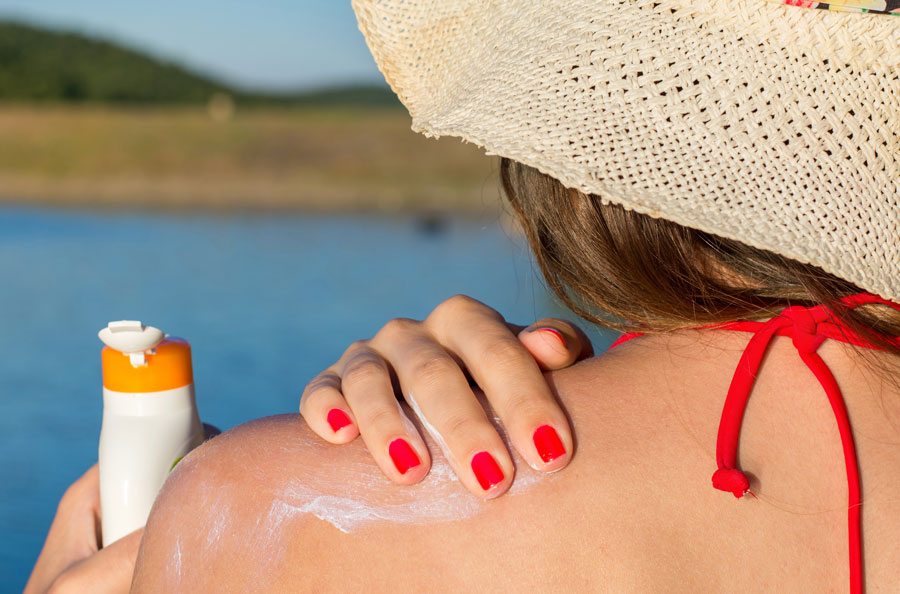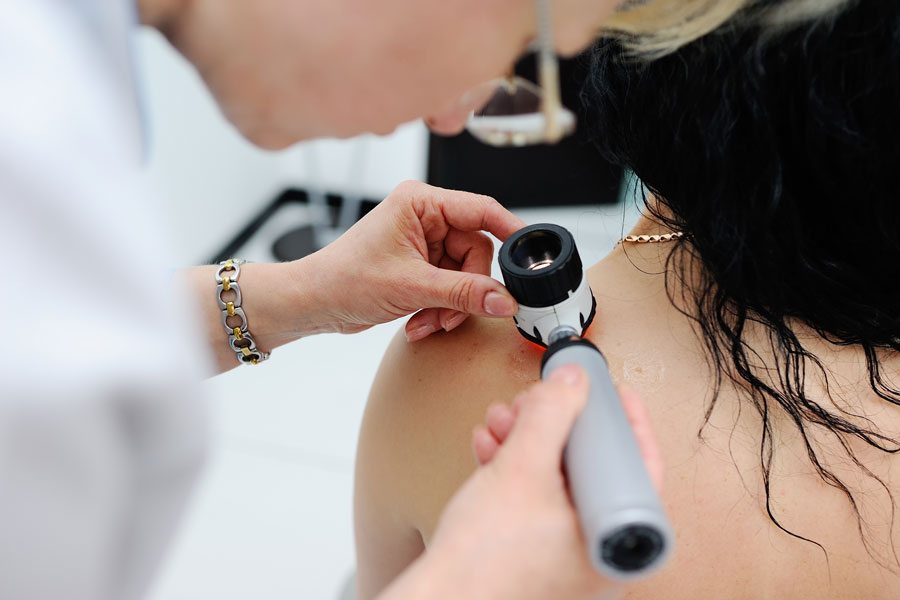Preventing skin cancer requires a lifelong commitment to skin health and you can begin this process by following a few simple prevention steps listed below. There are also relevant risk factors that may make you more susceptible to skin cancer and warning signs that you should look for. Read below to learn more about how you can avoid skin cancer.
Preventing Skin Cancer
Steps to Avoiding Skin Cancer
There are several important steps you can take to avoid skin cancer:
- Stay in the shade during the hours of 10 a.m.- 4 p.m.
- Avoid burning your skin or using tanning/UV tanning beds
- Wear clothing that covers vulnerable areas of your skin, including UV-resistant sunglasses and a hat with a broader brim
- Use sunscreen with an SPF of 15 or higher on a daily basis, with a sunscreen with an SPF of 30 or higher to be used for longer outdoor activity. All sunscreen should be broad spectrum (UVA/UVB), which protects against both types of harmful UV light.
- Apply sunscreen about 30 minutes before going outside, and reapply every two hours or following periods of swimming or sweating. The amount applied each time should be about an ounce.
- For babies, apply sunscreen for those over six months old and keep newborns out of the sun.
- Perform a full-body examination of your skin on a monthly basis for any abnormalities or areas of concern and visit your physician annually for a skin cancer screening.

Am I at Risk?
The following factors increase your risk for developing skin cancer:
- Overexposure to sunlight or tanning beds
- You’re fair-skinned or you sunburn easily, or you have natural red or blonde hair color or you don’t tan much at all, etc.
- You have a pre-existing family history of skin cancer
- You have multiple or unusual moles
- You’ve experienced severe sunburns in the past
- You have a weakened immune system

What Do I Need to Look For?
If you notice any of these signs or symptoms, it’s time to schedule an appointment with Cedar Valley ASCENT:
- A change in the size or color of a mole, growth or spot or a new growth (even if it has no color)
- Scaliness, roughness, oozing, bleeding or a change in the way an area of skin looks
- A sore that doesn’t heal
- The spread of pigmentation (color) beyond its border, such as dark coloring that spreads past the edge of a mole or mark
- A change in sensation, such as itchiness, tenderness or pain
If you have a mole or other skin spot you are concerned about, or if you’d like to know your skin cancer risk, contact Cedar Valley ASCENT for complete skin cancer care for northeast Iowa: screening, diagnosis, treatment and after care—all from a Mayo Clinic-trained, double board-certified specialist, Dr. David J. Congdon.